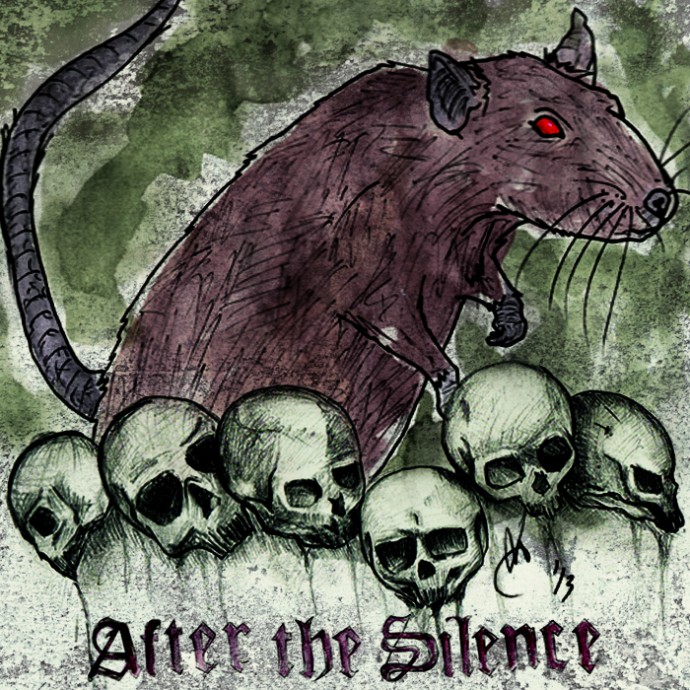We live in an era where every year there is a new epidemic to be alarmed by. SARS, Bird flu, Swine Flu, Ebola…the plague? Forgot about that one, didn’t you. Thats right, the plague is one of the longest living and dangerous diseases in history. Now, the disease is quite well understood, and more facts continue to develop with the “Black Death.” But the plague has never been extinct, and it continues to infect the world every year. If you are a hypochondriac, this is not the best article for you. But if you wanna learn a little history, how we, as humans, react during crisis, and how this ancient disease affects us today, read on…
“Ashes to ashes, we all fall down.” The great children´s chant is a fun, nostalgic reminder of the death sentence to Western civilization in the 13th and 14th century known as “The Black Death” or “The Plague.” Perhaps the most widely acknowledged theory of the epidemic is that it spread through oriental mat fleas and rodents, originating from Central Asia and sweeping into Europe through trade and shipping. The disease killed an estimated 75 to 200 million people near it’s peak in 1348-1350. This disease wiped out half of Central Europe´s population and left vast areas of land empty, with nothing left but the smell of rot and wilted posies…
Throughout history there has been outbreaks of the plague. The epidemic dies out after a few months because eventually it has no host in which the bacteria can survive, but that does not mean it is finished. The flea then finds a rodent or a warm area to act as a reservoir. The plague continued to wreak havoc in Central Europe well into the 17th century, and apparently in every year between 1346 to 1671. This was known as “The Second Pandemic.” The Black Death haunted Europe for almost three years before hitting Russia where then the plague hit every five years between the years 1350 and 1490. In London, the plague ravaged six times in a ninety year period killing off around 30% of the population. France was stricken in 1466 and it killed 40,000 people. In 1576, 50,000 died in Venice and late outbreaks in Italy from 1629 to 1631 resulted in troop movements during the Thirty Years War.
One of the most interesting and notable results of a plague outbreak is the Plague Riot of Moscow in 1771. Authorities forced quarantines and destruction of contaminated property such as public baths, factories, markets, and stores which soon resulted in food shortages. The outcome of such poor care for Moscow´s citizens began the riot. The people flooded to the chiming church bells of the the Chudov Monastery. Killing the archbishop and destroying the church. There was no God. Over 200,000 people died during that epidemic in Russia. The plague died out in Europe by the the early 18th century.
The third plague pandemic arouse in China in the middle of the 19th century spreading to all neighboring countries and killing 10 million in India alone.
It hit Australia killing over 1,000. This resulted in Australia´s first Public Health Department.
The first outbreak to hit the US was on the west coast in 1900-1904. From 1944-1993, 362 cases of human plague have been reported. Approximately 90% occurs in Arizona, California, Colorado, and New Mexico, and it mainly stays on the West Coast. Between 5 to 15 people are infected by the disease a year.
Today, scientists have recently visited the Black Death cemetery in London to research the teeth of victims who were diagnosed with the plague to study the genetic makeup of the bacterium. What are the similarities today and why did it sweep through half the world over 600 years ago? With this brand new more sensitive genetic technology, extracting dried bits of DNA hidden inside teeth, they found that the DNA is an ancient ancestor to the Yersinia pestis virus that still infects people to this day.
It is nothing new when I say that the plague has never been extinct and continues to reoccur throughout history, even to this day, but new studies show that the plague has been infecting humans for over 20,000 years. Research has recently discovered that it is quite possible for the disease to lay dormant for decades and trigger new outbreaks. The most recent outbreaks have been found first in Algeria and neighboring Libya.
The first hypothesis was that the bacteria simply transferred across borders carried upon fleas, but more research was done to see the connection between the strains in the two countries. No direct match was found. The plague in Libya resembled closely to the bacteria in Central Asia thousands of years ago, while the Algerian plague seemed to match with a strain originating in Vietnam during WWII. The conclusion was held upon strong evidence that fleas and rats carried the same bacteria as the disease in the recent outbreak in Libya.
The connections between the plague in the 13th century and now is heavily based upon the climate of the region. Libya had an incredibly humid winter, which is perfect for breeding fleas, and a poor agricultural season contributed to the increased population of rats. So around the world the plague can resurrect depending on the weather.
Don´t get scared. No reason to lock yourself in the house and wait for the demise of the man outside your window. The plague is not much to fear anymore. There is a little something called antibiotics. The plague bacterium could become drug-resistant, but for now it is unlikely. There has only been one case were the plague has been resistant to the many antibiotics used against it. So if you are the hypochondriac that was able to read on, I would worry more about the flu than the plague.







